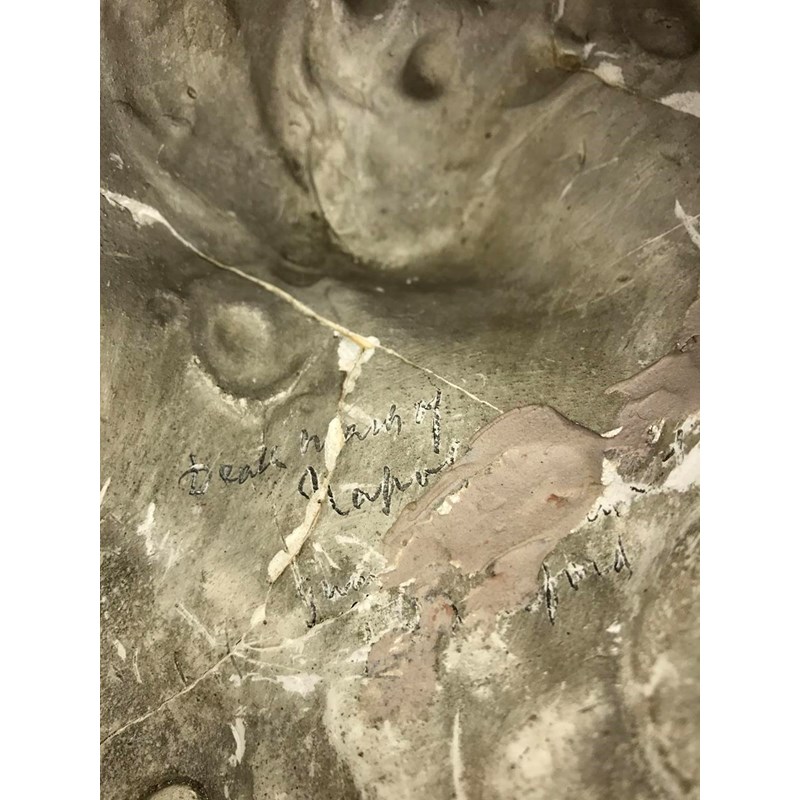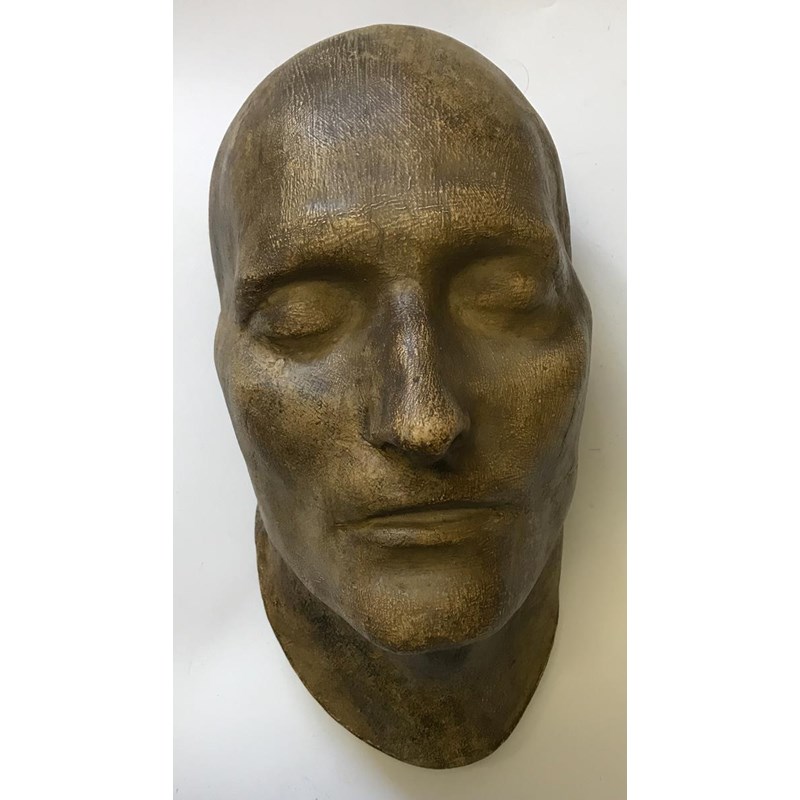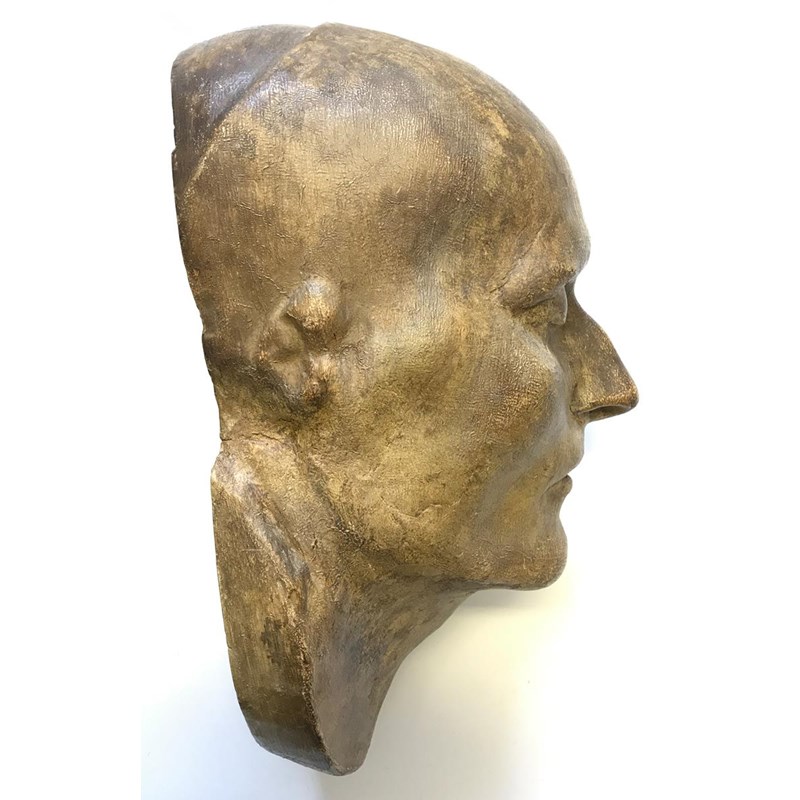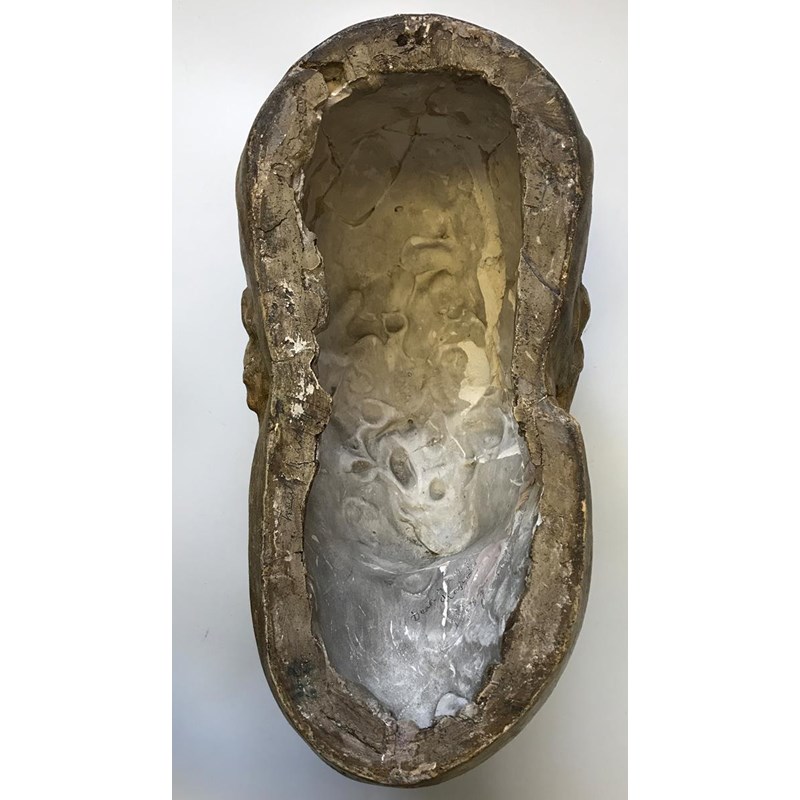Medals & Coins, Arms & Militaria - 22 Nov 2017
Napoleon Bonaparte: a historic early plaster death mask
Napoleon Bonaparte: a historic early plaster death mask, at one time known as the 'King' mask, and bearing an inscription by Sir Hudson Lowe, who was governor of Saint Helena during the time of Napoleon's captivity on the island.
Napoleon Bonaparte: an historic early plaster death mask, at one time known as the 'King' mask, and bearing an inscription by Sir Hudson Lowe, who was governor of Saint Helena during the time of Napoleon's captivity on the island.
The practice obtained, during the 18th and 19th Centuries, of making plaster casts of the heads or faces of important or wealthy individuals, either before or after death, so that a physical record of their appearance might be left to posterity. Napoleon Bonaparte declined to have a 'life cast' made, and when he died in exile at Longwood House on the South Atlantic island of Saint Helena in 1821, the creation of a death mask was found to be fraught with difficulty. None of the individuals present had any experience in carrying out such delicate work, and it appears, moreover, to have taken some time for a supply of the gypsum necessary for the production of the plaster to be obtained. Yet here was a man of almost unparalleled historic stature and to his adoring attendants the imperative of preserving his likeness was irresistible. The matter was first referred to Napoleon's personal physician, Francesco Antommarchi, who recoiled from the responsibility (though he was later to claim the credit for the mask). The difficult task fell instead to the surgeon of the 66th Regiment of Foot, Francis Burton M.D., who was able to make a single 'negative' mould of the Emperor's head. The unique original 'positive' cast that he produced (unique because the front of the mould was destroyed during the removal of the cast) was the progenitor of all subsequent Napoleon death masks.
The process by which further copies were made is not well documented, but many were produced in Europe by Antommarchi, when, following Burton's death in 1828, the Italian capitalised on his pretended authorship of the original mask (to which he appears to have had access for the purpose of making copies, courtesy of the Count and Countess Bertrand, who stole it from Burton at Longwood). These were sold by subscription, and extant examples include an extension below the neck impressed with a seal mark. Various other copies were also made in Europe and elsewhere, but the most important subset comprises those that were made on the Island of Saint Helena itself.
In his 1915 work 'The Story of Napoleon's Death Mask', the eminent scholar George Leo De St M. Watson hypothesizes that the secondary mould made at Longwood was the work of the artist Joseph William Rubidge, who took advantage of a brief interval between Burton completing the first cast and Madame Bertrand arrogating it; and Watson further avers that only one cast, the so called 'Sankey Mask' was taken from this mould. More recent scholarship recognises the existence of a greater number of locally made masks (the work either of Rubidge, Antommarchi or the two acting in concert), such as the 'Boys' mask - a kind of twin to the 'Sankey' mask (in that both were originally in the possession of the Reverend Richard Boys, chaplain to the H.E.I.C. in St Helena), and the two known as the 'Gilley' masks, which were presented to one Lieutenant Gilley by the erstwhile governor of Saint Helena Sir Hudson Lowe (a point of particular interest in considering the mask offered here, which bears his inscription).
Sir Hudson Lowe (1769-1844) arrived on Saint Helena April 14th 1816, having heard of his appointment as governor on August 1st 1815. He made only six official visits to Napoleon during the following five years. A stern disciplinarian, he was reviled by the French for the harsh and restrictive regime that he imposed on the former Emperor.
The so-called ‘King Mask’ (offered here) came to public notice in the late 1960s, at which time its owner, Miss Phyllis King, was considering its sale, and appears also to have included it in an exhibition devoted to Napoleon. The mask was the subject of correspondence in the national press, and of particular interest are the comments of two individuals: the recognised authority Baron Eugene de Veauce, author of 'Les Maques Mortuares de Napoleon'; and an antiquarian named Douglas Maher. Between them these men authenticated the handwriting of Sir Hudson Lowe, thus setting the keystone of this mask's provenance, which was established as follows:
1) Acquired by Sir Hudson Lowe at an unknown date and donated, with inscription to the English town of Stamford (with which he had a association), there to reside in the town museum.
2) Bought through the auctioneer Charles Eade following the closure of the museum in 1919, by a Mrs Atkinson of St Leonard Street, Stamford.
3) Given by her to Edmund Balding, Solicitor, of 60 Russell Square London, who dies with it in his possession.
4) Bought out of his effects by Miss Phyllis King.
5) Bought at auction by the current owner in 1978
The two aforementioned men differed on the question of whether the King mask originated on Saint Helena or in Europe; but even de Veauce (who favoured the latter conclusion) regarded it as a highly important member of the death mask 'family', which also includes many well-regarded examples without any Longwood provenance. De Veauce in fact went further, and assigned to it a unique and important distinction: that it emphatically quashed a then-current contention that the face represented by the Napoleon death masks was not that of the erstwhile Emperor at all. Since it has the endorsement of Sir Hudson Lowe, who had met Bonaparte, and who had nothing to gain by dissembling, the King Mask proves that all similar masks, from Burton's original downward, are the true likeness of the great man himself.
Maher on the other hand, as may be seen from the correspondence, felt convinced that the King Mask was made on St Helena, and there is much in the circumstantial evidence to encourage this belief (and circumstancial evidence, after all, forms an important part of the scaffolding supporting the authenticity of such masks, existing as they do in an atmosphere of scant or non-existent primary documentation). Lowe is directly associated with the Gilley Masks, which he took away from Saint Helena, it is thought, following a short visit on his way home from Ceylon 1830. Whether he obtained them then, or before he left for the first time in 1821, it is entirely feasible that he may have had a third copy for himself. The physical appearance of the mask accords with that of other examples that are acknowledged to have been made on Saint Helena, and lacks many of the attributes of the Antommarchi subscription copies, including the seal mark.
The King Mask is an object of great historic importance, irrespective of the conclusion that one draws from the available evidence. It clearly pre-dates 1844, when Sir Hudson Lowe died, and to de Veauce it is “not only important to Napoleonic iconography, but possessing the most direct bearing on the whole question of the death mask….a capital piece of evidence….it is of the highest interest to every student of Napoleon, let alone to every owner of a Napoleon mask..”
The final words shall be left to de Veauce’s collaborator Maher: “…since the inscription states that the effigy is the ‘Death Mask of Napoleon’, not a copy thereof, this could mean that it derives from…the secondary mould made at St. Helena……it would seem inconceivable that, knowing a mould was being made, Sir Hudson would not have secured a cast…”
Offered with a large collection of letters and other ephemera, including a verified sample of Sir Hudson Lowe’s handwriting, mainly dating from the late 1960s, when the King Mask was most recently help up to scrutiny.
References:
G.L.de St. M. Watson, ‘The Story of Napoleon’s Death Mask’
Eugene de Veauce, ‘Les Masques Mortuaires de Napoleon’
Arnold Chaplin, ‘Napoleon’s Captivity on St Helena 1815-1821’









 Live online bidding is available via our own
Live online bidding is available via our own